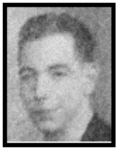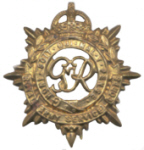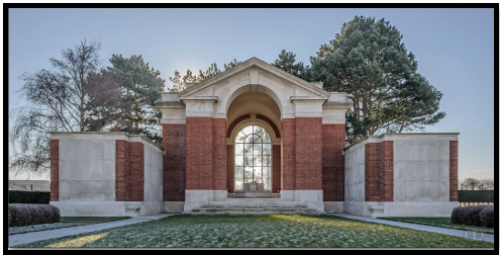



No.T/73927, Private, Arthur Ernest RATCLIFF
Aged 23

|
Arthur Ernest RATCLIFF was born in 1917 in Lowestoft (Mutford Q2-1917 4A:1708), son of Arthur and Helen RATCLIFF (née BLOWERS). Arthur and his younger sister Sybil May spent their childhood in Lowestoft. Before the war Arthur was employed at the factory of Rists Wires and Cables Ltd, who manufactured ignition coils and other motor goods. While working here Arthur met his future wife Iris May Weyman. Iris fondly remembers her work friends teasing her saying "Arthur Ratcliff keeps looking at you Iris. We think he will ask you out". Arthur did pluck up courage and was courting Iris when the war started. After enlistment, Arthur joined the Royal Army Service Corps as a Private. Iris's family moved to Haverhill as her father was employed at R.A.F. Stradishall. They made their family home in Helions Park Avenue. Arthur and Iris married locally in Qtr 1 1940 Newmarket 4a:3576. Sadly they had only been married for a month when Arthur was lost at sea,
In the 1939 register, at 458 London Road, Lowestoft were his father, Arthur V RATCLIFF [16-10-1891] marine boiler maker, and his mother Helen [2-11-1895]. One closed record. Iris's parents apparently lived at 13 Helions Park Avenue, Haverhill but Iris has not been found in the register (there are two closed records). |

|
Arthur was onboard the rescue ship HMT Lancastria when it was bombed by German aircraft.
By 04:00 on 17th June, Lancastria was anchored in the Charpentier Roads, some 5 miles (8.0 km) southwest of St. Nazaire. Almost immediately, exhausted troops and some civilians began to board. At about 13.00 hrs the red alert sounded and a dive bomber was seen to attack the Oronsay which was some distance off. Those on the deck of the Lancastria must have feared the worst expecting the enemy to return. The ship had taken some 6,000 people on board, soldiers and RAF personnel plus about a thousand civilian refugees and more kept coming. At around 15.00 hrs Captain Sharpe decided that he could take no more. At about 15.50 hrs the enemy returned. Bombs were seen to straddle the ship, one bomb that exploded close to the port side ruptured her fuel tanks but the bomb that actually sank the Lancastria went straight down the funnel. There were 2,477 survivors, including Captain Sharpe, who were picked up by HMS Havelock and other ships. The site of the sinking is now an official War Grave protected by The Protection of Military Remains Act of 1986. , The loss of the Lancastria was the fourth largest maritime disaster of the war. Captain Sharpe later lost his life when the ship he commanded, the Laconia, was sunk. Under the Official Secrets Act, the report on the Lancastria cannot be published until the year 2040. So great were the losses that the Government immediately placed a 'D-Notice' on news of the sinking, meaning that newspapers and broadcasters were unable to report the sinking, ensuring that the story of the Lancastria remained all but unknown.
|
photo: Commonwealth War Graves Commission
click here to go to the Commonwealth War Graves Commission website for full cemetery/memorial details